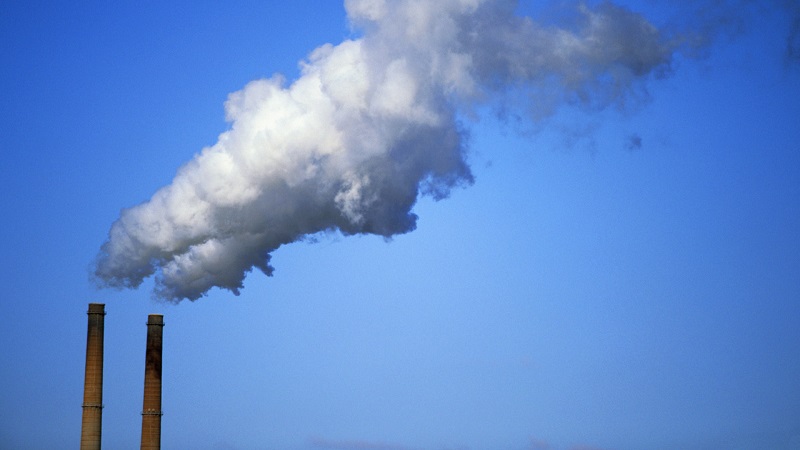China's Emissions Trading Scheme: What it means for Australia
February 27 2018

1. On December 19 2017 China took the first step towards launching a nation-wide carbon emissions trading scheme (ETS).[1] It has been testing emissions trading since 2013 with seven pilot schemes in five cities (Beijing, Chongqing, Tianjin, Shanghai and Shenzen) and two provinces (Guangdong and Hubei). [2] In December 2016 Fujian launched its ETS becoming the eighth pilot region.[3] Sichuan launched voluntary carbon trading in December 2016.[4]
2. China’s nation-wide ETS will be implemented in three phases. The first phase will focus on infrastructure construction (approximately one year) and the second phase will be on system testing (another year). Actual trading is not likely to occur until 2020.[5]
3. The ETS will begin with only the power generation sector and gradually extend to cover energy intensive sectors such as iron and steel, cement, and the petrochemical sector. It is estimated that 1700 power plants will be covered initially. [6] Despite only covering one sector, China’s carbon market will cover 3.3 billion tonnes, 1.7 times the size of the EU’s ETS, currently the world’s largest.[7]
4. China’s ETS will change the balance between fossil fuel and renewable energy consumption. The competitiveness of coal will fall. As a result, Australia’s exporters of coal to China have reason to be concerned.[8] China is currently Australia’s second and third largest customer of thermal coal and metallurgical coal, respectively.[9]
5. Products with an energy intensive supply chain may also be disadvantaged by the ETS.[10] This means that Australia’s iron ore exports to China could also come under pressure as steel production in China becomes more costly.
6. Australia’s non-energy exports to China could potentially be negatively affected by measures taken to prevent the transfer of production to countries with more lax emissions standards, i.e. carbon leakage.[11] For example, China might impose a carbon tariff, called the Border Tax Adjustment. Such measures are a new form of regulation not explicitly foreseen in the text of World Trade Organization (WTO) agreements. But core WTO principles, such as that of non-discrimination, might be used to justify their implementation.[12]
7. The share of coal and natural gas in China’s total primary energy supply in 2016 was 62 percent and six percent, respectively.[13] This means the potential for substitution in favour of cleaner Liquid Natural Gas (LNG) is significant. In 2017 China overtook South Korea as the world’s second largest LNG importer[14], while Australia is soon expected to become the world’s largest LNG exporter.[15]
8. Australia could also benefit in other ways from a growing low carbon emission energy market in China. One example is hydrogen exports.[16] China recently became the first country to operate a tram powered by hydrogen fuel cells.[17]
This fact sheet was prepared by Xunpeng Shi, Principal Research Fellow, Australia-China Relations Institute, University of Technology Sydney.
Sources:
[1][1] Xinhua, ‘China launches nationwide carbon trading system’, Xinhua News, December 19 2017 <http://www.xinhuanet.com/english/2017-12/19/c_136838026.htm>.
[2] Josh Margolis, Daniel Dudek and Anders Hove, ‘Rolling out a Successful Carbon Trading System’, Paulson Institute, September 2015, p 14 <http://www.paulsoninstitute.org/wp-content/ uploads/2015/09/5-Emissions-Trading-EN-final1.pdf>.
[3] GIZ, ‘First annual compliance cycle ended in the Fujian pilot ETS’, June 28 2017 <http://ets-china.org/news/first-annual-compliance-cycle-ended-in-the-fuj....
[4] Sichuan Provincial People’s Government, ‘Sichuan enlisted into carbon emission right trading list’, December 2016 <http://www.sc.gov.cn/10462/10758/10760/10765/2016/12/21/10408331.shtml>.
[5] National Development and Reform Commission, ‘NDRC releases ‘national emissions trading market construction plan’ [国家发展改革委关于印发全国碳排放权交易市场建设方案(发电行业)》的通知], December 18 2017 <http://www.ndrc.gov.cn/zcfb/gfxwj/201712/t20171220_871127.htm>.
[6] Central Government of the People’s Republic of China, ‘National emissions trading market system officially opens [全国碳排放交易体系正式启动]’, January 20 2017 <http://www.gov.cn/xinwen/2017-12/20/content_5248687.htm>.
[7] Emily Feng, ‘China moves toward launch of carbon trading scheme’, Financial Times, December 19 2017 <https://www.ft.com/content/cd549b9a-e088-11e7-a8a4-0a1e63a52f9c>.
[8] Bianca Nogrady, ‘China’s emissions trading scheme puts Australian companies on notice’, The Guardian, October 4 2017 <https://www.theguardian.com/sustainable-business/2017/oct/04/chinas-emis....
[9] Australian Government Department of Industry, Innovation and Science, Office of the Chief Economist, Resources and Energy Quarterly, December 2017 <https://industry.gov.au/Office-of-the-Chief-Economist/Publications/Pages....
[10] Bianca Nogrady, ‘China’s emissions trading scheme puts Australian companies on notice’, The Guardian, October 4 2017 <https://www.theguardian.com/sustainable-business/2017/oct/04/chinas-emis....
[11] European Commission, ‘Carbon leakage list’ <https://ec.europa.eu/clima/policies/ets/allowances/leakage_en>.
[12] United Nations Environment Program and World Trade Organisation, ‘Trade and Climate change’, 2009 <https://www.wto.org/english/res_e/publications_e/trade_climate_change_e.....
[13] BP Statistical Review of World Energy, 2017 < https://www.bp.com/en/global/corporate/energy-economics/statistical-revi....
[14] Henning Gloystein, ‘China becomes world’s No. 2 LNG importer in 2017, behind Japan’ , Reuters, December 26 2017 <https://www.reuters.com/article/us-china-lng/china-becomes-worlds-no-2-l....
[15] Australian Trade and Investment Commission Singapore, ‘Australia remains on track to become the world’s largest exporter of liquefied natural gas by 2020’ <https://www.austrade.gov.au/local-sites/singapore/news/missions/australi....
[16] Cole Latimer, ‘CSIRO launch program to make Australia hydrogen fuel leader’, November 8 2017 <http://www.smh.com.au/business/energy/csiro-launch-program-to-make-austr....
[17] Xinhua, ‘World’s first hydrogen tram runs in China’, China Daily, October 27 2017 <http://www.chinadaily.com.cn/china/2017-10/27/content_33769630.htm>.

